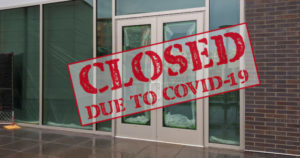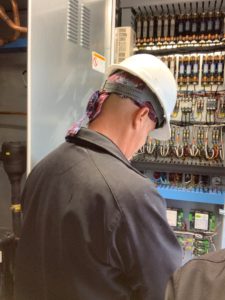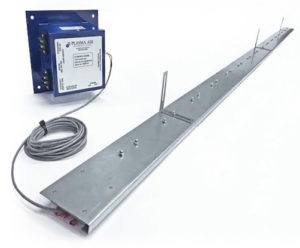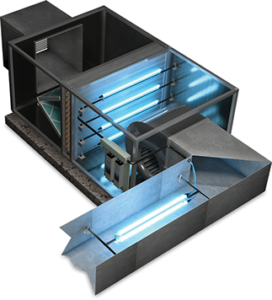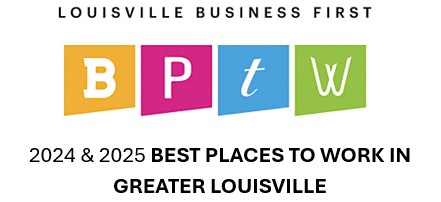Are you a building owner or property manager wondering if you are ready to let people back in your building?
Are you an employee or occupant wondering if the space you are getting ready to occupy is as safe as it can be?
Are you concerned about the air quality in your child’s school?
Below is a quick reference of things that can and should be considered BEFORE bringing groups of people back indoors.
- Identify a qualified workplace coordinator: This person is not necessarily a member of the facilities team, but should be someone that is familiar with the building and up to speed on all federal and state regulations relating to the pandemic, including guidelines put out by the CDC and OSHA. This Coordinator should be in charge of addressing all of the items on this blueprint. They should have access to all required information sources (internal and external – such as management, building design teams, equipment and systems reps, landlords, other building tenants and employees/occupants). Prepare a list of all contacts and their contact information.
- Identify what must be cleaned and sanitized: Before the building is reoccupied (both regular and deep cleaning). Refer to The American Industrial Hygiene Association (AIHA) guidance for workplace cleaning.
- Obtain cleaning and sanitizing supplies: Order cleaning and sanitizing supplies now for the future. Hand sanitizers, extra cleaner for wiping critical areas such as tables in the break room and door handles, wipes, and more. A good list of what types of products to get may be found on the CDC website.
- Works Spaces and Labels: Try and identify work area that are larger so that people to spread out, and if possible, a high ceiling to provide more volume for air dilution. Consider space with operable windows if there are potential ventilation issues. Apply signage decals or tape for social distancing reminders.
- Inspection and Maintenance: Have a service professional assess the condition of HVAC systems and making necessary repairs. Follow ASHRAE Standard 180-2018 (Standard Practice for the Inspection and Maintenance of Commercial HVAC Systems).
- Inspection from Exterminator: While the facility was in unoccupied mode or sitting empty for months, did some unwanted guests move in? Bring in an exterminating company to check.
- HVAC Fan Operation: The HVAC and toilet exhaust systems should be running anytime the space is occupied. If the HVAC system cycles on/off with the thermostat, consider running the fan constantly during occupied hours. If toilet exhaust is controlled by manual switches, leave the fan running for 20 minutes after use, or consider setting the switch to “on” and use signage that directs not to change the setting.
- Ventilation: A good supply of outside air, in accordance with ASHRAE Standard 62.1 should be used to dilute indoor contaminants as a first line of defense against aerosol transmission of viruses. Running HVAC systems is purge mode to flush the building with clean air prior to occupancy is recommended. If the building is poorly ventilated, consider opening doors and windows.
- Space Air Distribution: Air flow in the space should not move air from the face of one person onto others. Be aware of air flow patterns in the space and how they may be effect by opening windows and/or adding portable fans to the space.
- Filtration: Use of at least MERV-13 rated filters is recommended, if it does not adversely impact HVAC system operation. Portable HEPA air cleaners in occupied spaces should also be considered when ventilation air is inadequate or filter upgrades are not possible.
- Air Cleaning: Air cleaners such as Bi-Polar Ionization, Ultraviolet Light and Dynamic Filters should also be considered to supplement ventilation and filtration. Technologies and specific equipment should be evaluated to ensure they will effectively clean indoor air without negative effects on the space temperature, humidity or air distribution.
- Temperature and Humidity: Maintain relative humidity between 40-60% through the means of the existing HVAC system or by adding humidifiers to the system or spaces. Temperature set points should be maintained per ASHRAE 55 Standards.
- Air Quality Monitoring: Developing an air sampling plan and knowing how to interpret and respond to the results real-time is critical to any air-quality investigation. Sampling in an area on a regular basis can help you determine if your air cleaning efforts are effective. The most accurate and reliable systems are those that are permanently installed with multiple sensors that can compare air from the indoor environment to outside air.
- Water System Precautions: Buildings that have been unoccupied could have stagnant water in the pipes. Water systems should be flushed to remove potential contaminants. Utilizing ASHRAE Standard 188 and Guideline 12 will help minimize the risk of water-borne pathogens such as Legionella.
- Budget for Required Actions: Once an action list based on the above has been developed, determine whether any budget modifications will need to be requested, and if so, get that ball rolling. Also determine whether additional equipment, furnishings, or supplies will be required, and be sure they are included in the budget.
- Communicate: All modifications as well as all new rules and guidelines should be continuously communicated to occupants of the building via video meetings or email newsletters.
As always, the Indoor Environmental Quality experts here at Air Equipment Company are always willing to help you assess your current systems and help identify any potential upgrades that can be implemented to make your building safer and help keep its occupants healthy. Please reach out to us today!

